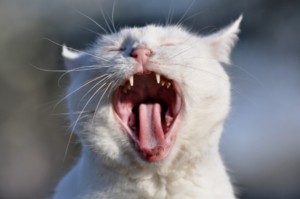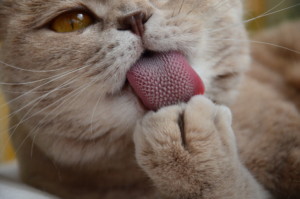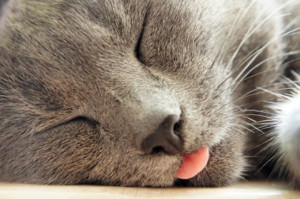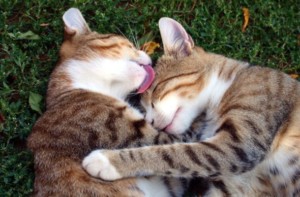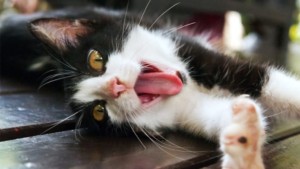In the name of “Cats just keep getting weirder”, did you know that cats use their tongues for more than just eating and drinking? Yup, you heard me…super weird. So, settle in and let’s learn some cool things about cat tongues! (on another note, I am attempting to set a world record for the number of times the word “tongue” is used in a blog post)
First things first. One of the biggest differences between human tongues and cat tongues is that they are super rough. As in, they feel like sandpaper. There is something called papillae, which are backwards-facing barbs, on the surface of a cat’s tongue. These little guys are great for grooming! The grooming process is essential for removing parasites (yuck), spreading body oils evenly, and increasing circulation. So, when you freak out because your cat literally licks themselves all day long, don’t worry, they’re built for that!
If you thought cats drink water just like people, I’ve got news for you: they are WAY cooler than that! The papillae actually act like miniature cups that hold the water. The motion essentially causes the water to form a column that continues upwards, into the cat’s quickly closed mouth. The term “cat-like reflexes” apparently applies to drinking techniques as well!
Raise your hand if your cat licks you… like maybe they think you aren’t good enough at showering? Well don’t fret, there’s a reason for this, and it’s pretty adorable! Cats lick the people they accept as a part of their family (cue the “awww”). Cats licking one another, or their people, is a part of a social and bonding ritual. It is initiated at birth when mama cat licks her young to clean and stimulate them – behavior essential for their survival. On the other hand, if you look at it this way, cats lick to establish territory by leaving their scent behind. So they may just be claiming you as their property – something I think we have all come to know and accept.
At the end of the day, cats use their tongues to explore the world (and the weirdness comes full circle). This is actually very important to keep in mind, because while cat tongues are designed to perform a great number of very cool tasks, they often find their way into things that are not meant for them. For example, stringy objects such as hair-ties, yarn, curtain string, and the like can be incredibly dangerous for cats. They’ll often touch an object with their tongues that will trigger their prey drive, and before you know it, string is wrapped up in their tongues or in their bellies – yikes! Another very dangerous temptation for cats is cleaning products. The vast majority of cleaning products are incredibly toxic to cats (and really all living creatures), yet for some reason, cats tend to put their tongues on them anyways. So be very cognizant of the chemicals you keep in your house, and to be on the safe side, I absolutely recommend using all-natural products to keep your pets safe!


